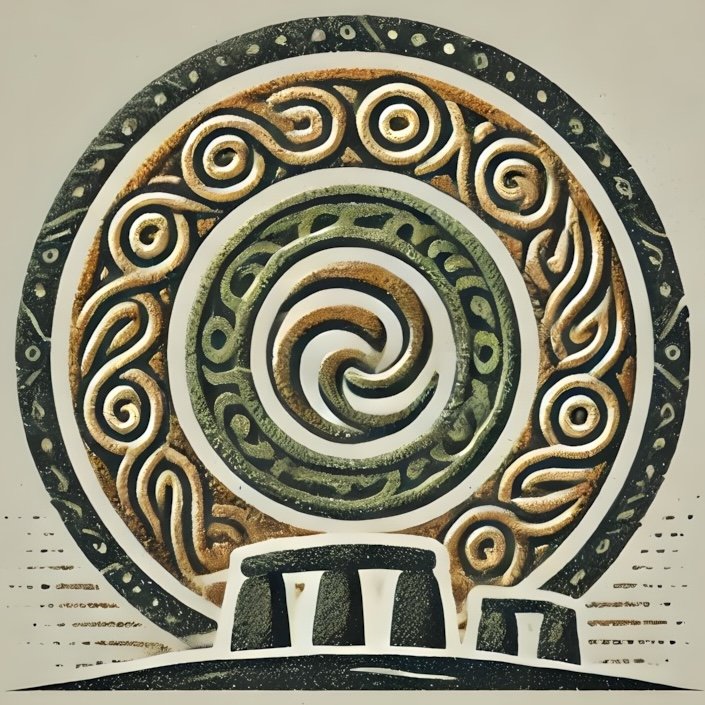Introduction to the Shift
Around 4000 BCE, a profound transformation began to take shape across the landscapes of Ireland, marking a pivotal moment in human history: the shift from a nomadic lifestyle to settled farming communities. This transition, often referred to as the Neolithic Revolution, was not merely a change in subsistence strategies; it fundamentally altered social structures, economic systems, and cultural practices. The advent of agriculture allowed communities to thrive, giving rise to complex societies that left an indelible mark on the Irish landscape, both physically and spiritually.
Environmental Context
The shift to farming in Ireland was influenced by a variety of environmental factors. The end of the last Ice Age, around 10,000 years ago, brought about significant climatic changes. As the glaciers receded, the landscape transformed into lush, fertile plains, ideal for agriculture. The warming climate allowed for the growth of diverse flora, which in turn supported a variety of fauna. This rich environment provided early settlers with the resources necessary to experiment with farming and animal husbandry, leading to the gradual domestication of plants and animals.
Archaeological Evidence of Farming
Archaeological excavations throughout Ireland have uncovered a wealth of evidence that highlights the transition to farming. Sites such as the Neolithic settlement at Céide Fields in County Mayo reveal extensive field systems, indicating organized agriculture. The discovery of tools such as polished stone axes, used for clearing forests, alongside remnants of ancient ploughs, illustrates the technological advancements that accompanied this shift. Additionally, the presence of storage pits filled with charred grain points to the cultivation of crops and the establishment of a sedentary lifestyle.
Crops and Domesticated Animals
The introduction of farming in Ireland brought with it a suite of domesticated crops and animals. Early farmers cultivated grains such as barley and wheat, which became staples of the Neolithic diet. Archaeobotanical studies have identified these grains in various sites, providing insights into agricultural practices. Alongside crops, animals such as cattle, sheep, and pigs were domesticated, offering a reliable source of meat, milk, and wool. This diversification of food sources not only enhanced nutrition but also supported larger populations, laying the groundwork for more complex societal structures.
Settlement Patterns
The shift to farming necessitated new forms of settlement. Unlike their hunter-gatherer predecessors, who moved frequently in search of resources, Neolithic farmers established permanent or semi-permanent villages. These settlements were often strategically located near fertile land and water sources. Evidence from sites like Lough Gur in County Limerick shows clusters of houses arranged around communal spaces, reflecting a growing sense of community and cooperation. The layout of these settlements indicates a shift towards more organized social structures, with designated areas for communal activities and rituals.
Social and Economic Changes
The transition to a farming lifestyle brought about significant social and economic changes. With the ability to produce surplus food, communities could support larger populations and develop more complex social hierarchies. The emergence of specialized roles, such as artisans and traders, marked the beginnings of economic diversification. This newfound wealth and stability likely led to increased trade between communities, fostering connections that transcended local boundaries. Additionally, the accumulation of resources may have contributed to social stratification, with some individuals or families gaining more power and influence within their communities.
Cultural and Spiritual Implications
The shift to settled life also had profound cultural and spiritual implications. As communities became more established, so too did their belief systems and cultural practices. The construction of megalithic structures, such as passage tombs and standing stones, reflects a growing interest in the spiritual and ceremonial aspects of life. Sites like Newgrange in County Meath serve as both burial places and places of worship, indicating a deep connection between the living and the dead. These structures were often aligned with astronomical events, suggesting that early farmers were not only attuned to the rhythms of nature but also sought to understand their place within it.
Megalithic Structures and Agriculture
Megalithic structures are a hallmark of Neolithic Ireland, and their construction was closely linked to agricultural practices. These monumental edifices often served as communal burial sites, reinforcing social cohesion and collective identity. The alignment of many megaliths with solar and lunar cycles underscores the importance of agriculture in shaping cultural and spiritual beliefs. For instance, the winter solstice at Newgrange heralds the return of the sun, symbolizing rebirth and renewal—a theme that resonates deeply with agrarian societies dependent on the cycles of nature for their survival.
Impact on the Landscape
The shift to farming had a profound impact on the Irish landscape. Forests were cleared to make way for fields, altering the natural environment and creating new ecosystems. The introduction of domesticated animals also changed the landscape, as grazing patterns reshaped vegetation. Over time, these human activities led to the development of distinct agricultural landscapes, characterized by hedgerows, field systems, and settlement patterns that are still visible today. This transformation not only reflects the ingenuity of early farmers but also serves as a testament to the enduring relationship between humans and their environment.
Connections to Irish Mythology
The transition to farming and settled life is intricately woven into the fabric of Irish mythology. Many myths and legends reflect the agricultural practices and spiritual beliefs of Neolithic communities. The Tuatha Dé Danann, a mythical race in Irish lore, are often associated with the land and its fertility, embodying the connection between the people and the earth. Tales of the Dagda, the god of fertility, and his magical cauldron, which never ran empty, highlight the importance of abundance and sustenance in the lives of early Irish farmers. Furthermore, the landscape itself is imbued with mythological significance, with many megalithic sites believed to be gateways to the Otherworld, bridging the gap between the living and the spiritual realms.
Additional Considerations
The shift to farming in Ireland was not an isolated phenomenon; it was part of a broader pattern of agricultural development across Europe. The exchange of ideas, technologies, and crops facilitated the spread of farming practices, leading to a shared cultural heritage that transcended regional boundaries. Moreover, the legacy of this transition continues to resonate today, as modern agricultural practices and land use are deeply rooted in the traditions established by these early communities.
As you explore the Irish landscape, take the time to visit key sites that embody this rich history.

